Fennel Frond Pesto
This Vegan Fennel Frond Pesto is a great way to use up the top of your fennel bulb that you don’t know what to do with! This no-waste pesto recipe uses the fennel fronds and stems to create a delicious, unique pesto that has a mild flavor and is perfect on pasta, vegetables, or your favorite protein.
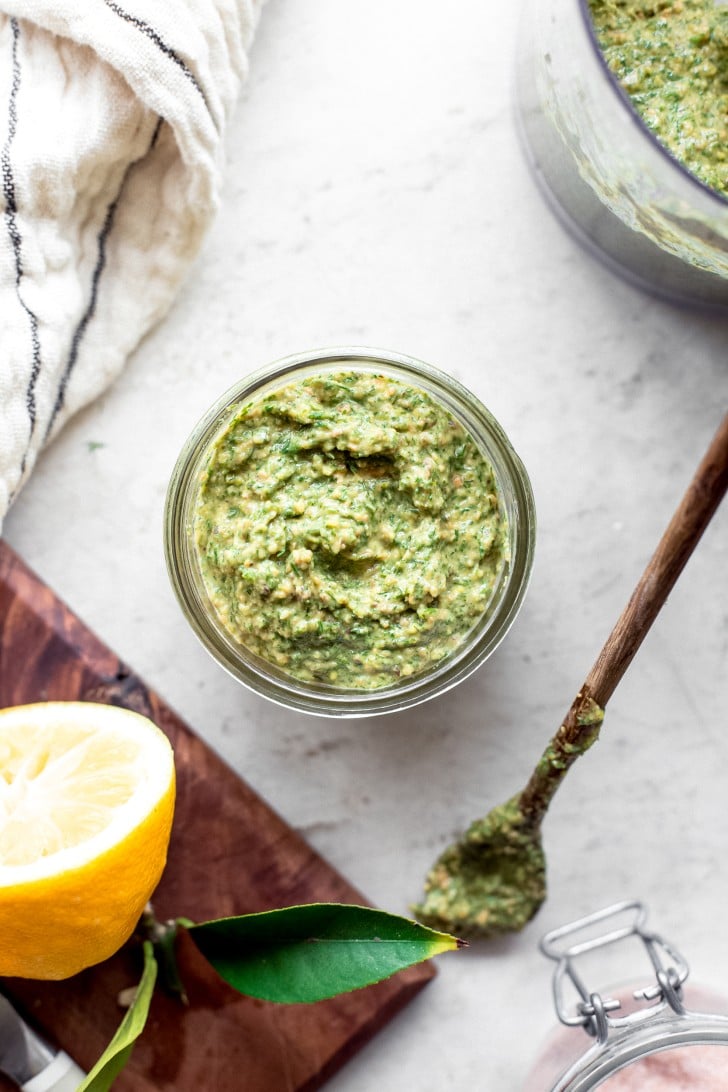
We love a good pesto around here – this spinach basil pesto is a longtime favorite, and pesto makes an appearance in some of my all-time flavor meals. See: cauliflower gnocchi with pesto and arugula pesto pasta. The bright, herby flavor and delicious texture will forever be one of my favorites.
So naturally, I try to make pesto out of everything green that passes through my kitchen that I’m not sure what to do with! First, I turned carrot tops that were destined for the compost into a delicious carrot top pesto. When I had a pile of fennel fronds sitting on my counter after simmering the fennel along with some chickpeas in tomato sauce…my mind turned to pesto. I tasted some plain and they were surprisingly mild, with just a hint of anise-y fennel flavor. Perfect for pesto making!

What are fennel fronds, and which part do I use?
Fennel fronds are the feathery tops of a fennel bulb that look a lot like dill. They smell great and are generally pretty tender, with a taste that is similar to the anise-flavor of fennel but a lot more mild than the bulb. If you buy a fennel bulb with the fronds attached, you usually get a LOT of fronds. My fennel bulb yielded about 4 cups of fronds. Scale down the recipe if your fennel gave you fewer fennel fronds to use!
Some stems are fine to include in this pesto, but I wouldn’t use the thicker stems, which can be woodier and not blend as well. The thinner stems towards the top are fine to include, though. Throw what you can’t use into your compost pile to make this a zero-waste recipe!
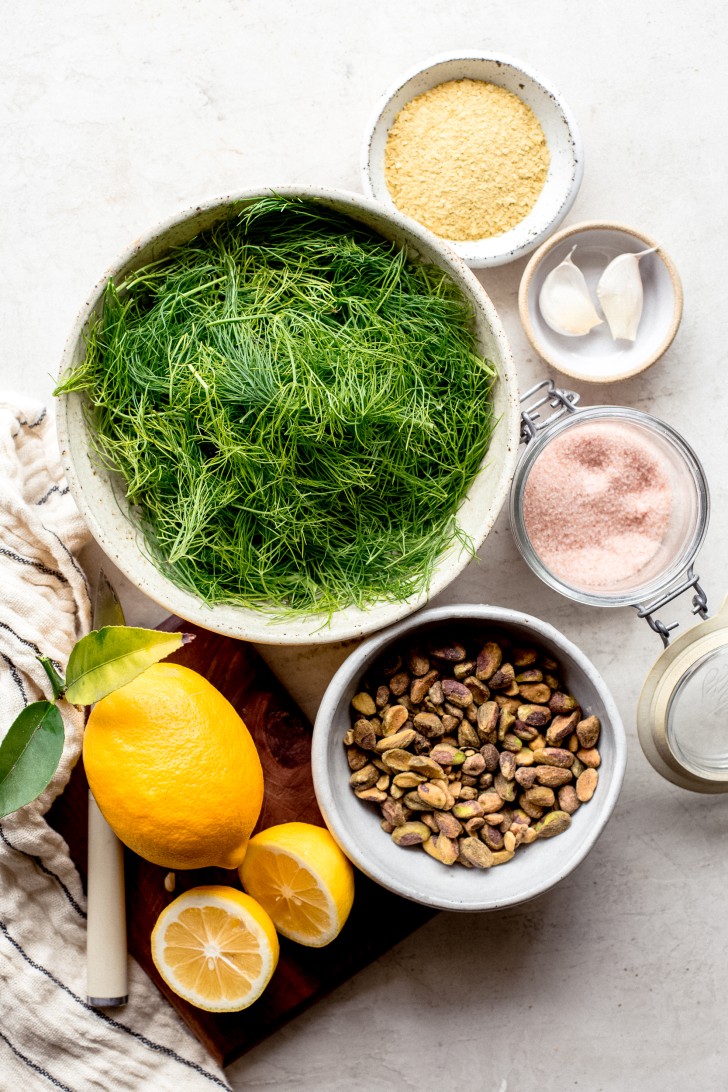
What else goes into fennel frond pesto?
- Pistachios: I found the flavor of the pistachios paired so beautifully with the fennel fronds, but you can keep it classic with pine nuts, or substitute another favorite nut of yours.
- Garlic: I like it garlicky, so I use two cloves – feel free to use one if you prefer.
- Lemon: I also like it lemony, so two lemons for me! Start with the juice and zest of one lemon and add more to taste.
- Nutritional Yeast: if you’re not vegan, feel free to substitute Parmesan for the nutritional yeast.
- Salt: plus some pepper to taste, if you like peppery pesto!
- Fennel Fronds: use the feathery parts, with the most tender stems. Leave out any stems that are too thick or wouldn’t blend easily.
- Olive Oil: I use a good quality extra virgin – no need to use the best quality though since the other flavors will overpower it.
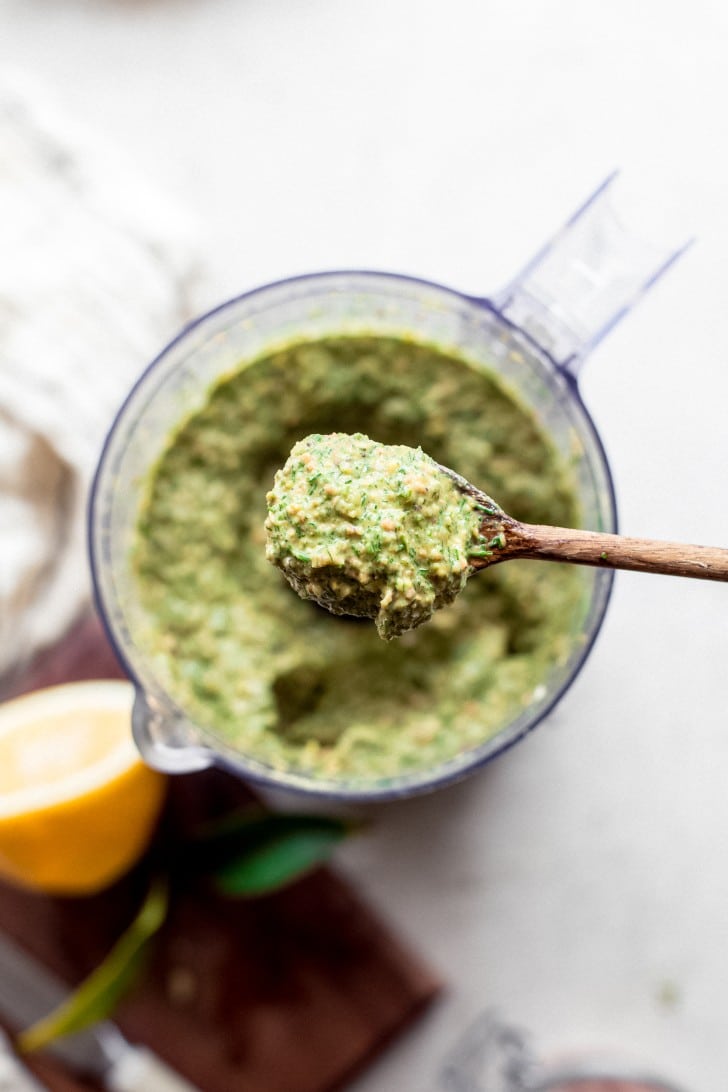
How do you make fennel fronds pesto?
- To make, you’ll combine all of the ingredients except for the fennel fronds and olive oil in a small food processor or blender. I use my KitchenAid Cordless Chopper.
- Pulse a few times to break up the nuts and garlic, and then add in the fennel fronds. Pulse a few times to break them down, and then slowly drizzle in the olive oil, pulsing frequently as the pesto breaks down.
- Keep adding oil and blending until the fennel pesto reaches your desired consistency.
- Taste and adjust as necessary, and then transfer to a jar and store in the fridge until ready to use!
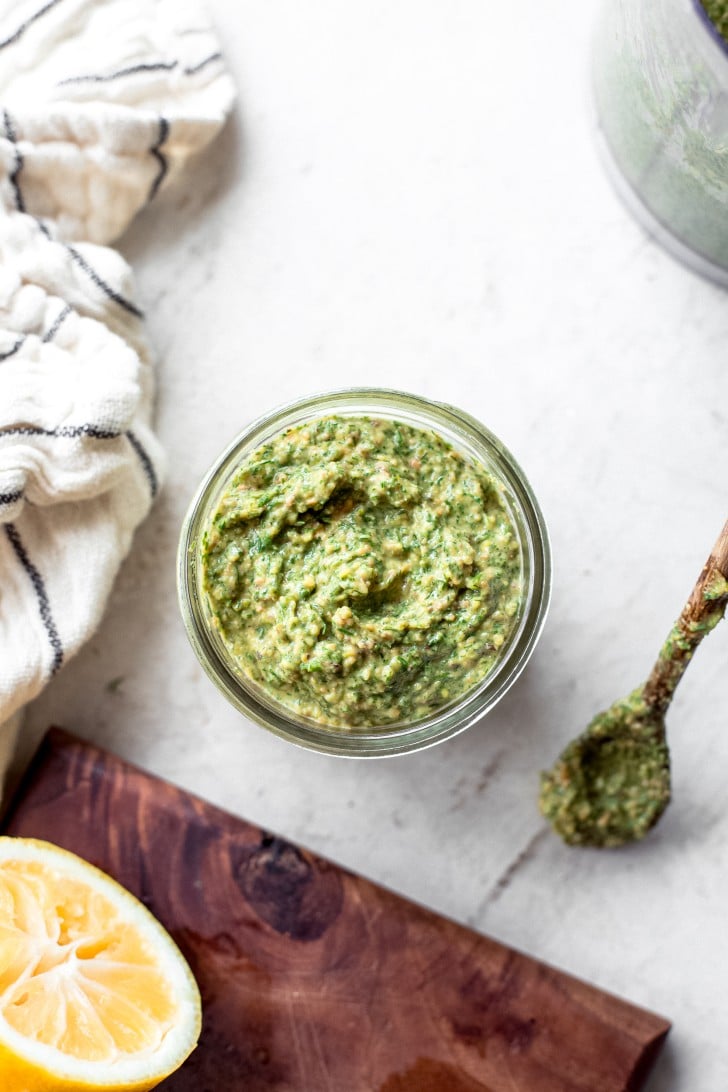
Tips for the best pesto!
- Leave out the thick fennel frond stems for a pesto that blends well and doesn’t have any stringy stems.
- Combine with other favorite herbs for extra flavor! I kept this one pure with just fennel fronds, but you can add in the classic basil, or change the flavor a bit by adding dill, cilantro, or any other herby favorites.
- Drizzle in the oil slowly to help it emulsify.
- Make it as thick or thin as you like by adjusting the amount of oil. You can also thin with water.
- Don’t forget to adjust for taste! Add more salt, lemon, or nutritional yeast depending on your favorite type of pesto.
What’s the best way to store fennel frond pesto?
- This pesto stores well in the refrigerator for up to a week.
- You can freeze this pesto! Put it in a jar with a little extra room on the top (if it’s filled too high, it can crack the jar when frozen) and you can have fresh pesto all year round. It will stay good for at least 6 months in the freezer.
I personally love splitting the pesto between two jars: one to keep in the fridge and use immediately, and the other into the freezer to have on hand.
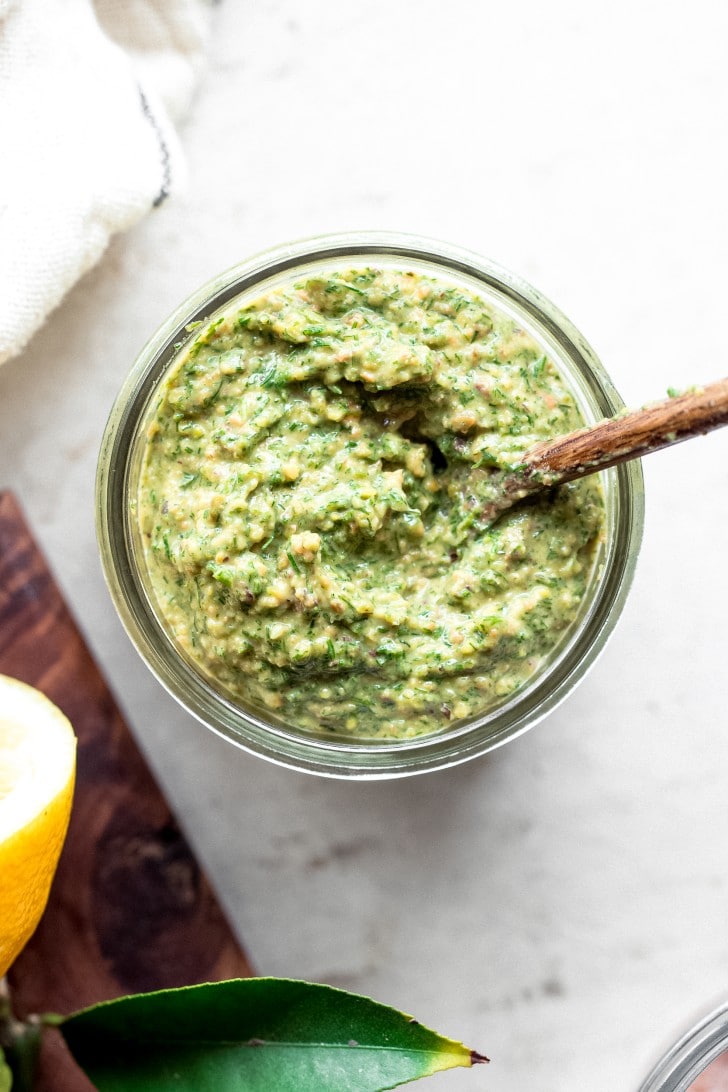
Perfect pairings for pesto:
- Easy Vegan Mac & Cheese
- Gluten-Free Vegan Pesto Pasta with Broccoli
- Vegan Cauliflower Gnocchi with Pesto
- The Best Roasted Broccoli
- One-Pot Creamy Lemon Pasta
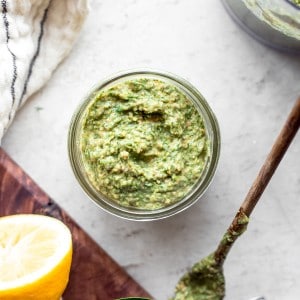
Fennel Frond Pesto
- Prep Time: 10 minutes
- Total Time: 10 minutes
- Yield: 1½ cups pesto 1x
- Category: Sauces
- Method: Food Processor
- Cuisine: Italian
- Diet: Vegan
Description
This Vegan Fennel Frond Pesto is a great way to use up the top of your fennel bulb that you don’t know what to do with! This no-waste pesto recipe uses the fennel fronds and stems to create a delicious, unique pesto that has a mild flavor and is perfect on pasta, vegetables, or your favorite protein.
Ingredients
- 1 cup roasted & salted shelled pistachios
- 2 small cloves garlic
- 1 to 2 lemons, juiced, plus the zest
- 2 tablespoons nutritional yeast, or parmesan if not vegan
- 1 teaspoon salt, or to taste
- 4 cups fennel fronds, the feathery green part of the fennel, thinner stems are fine to include
- ⅓ cup olive oil
Instructions
- Combine the pistachios, garlic, lemon juice & zest, nutritional yeast, and salt in your food processor or blender. Pulse to break up the pistachios and garlic.
- Add in the fennel fronds and blend/pulse as you drizzle in the oil. Add oil until you get to your desired pesto consistency, scraping down the sides as necessary to get all the pesto blended up.
- Taste and adjust the salt and lemon as needed. Use immediately, or transfer to a jar and keep in the refrigerator for up to a week. You can also freeze for up to a year.


Very nice pesto -lemony and “green” tasting – doubt anyone would know it was fennel if I didn’t disclose it. Had some leftover carrot tops and added them into the mix, but it was mostly the fennel tops. My only comment – I used more like a cup of olive oil – it was very very stiff at 1/3 cup. But to each her own!
Thanks for the feedback, Liz! So glad you enjoyed it :)
Loved this! Great way to use up fennel fronds.
★★★★★
Thanks, Belinda!! It’s my go-to now :)